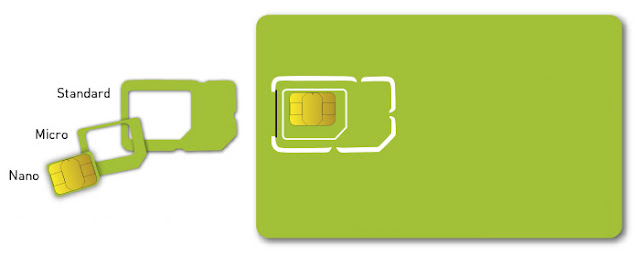Many users still complain about the size of SIM (subscriber identification module) cards. Which one goes on the phone? Can it be shortened? Can a smaller one into a larger slot?
Although we are slowly switching to eSIM (more on this in this article), we still use classic SIM cards. Newer phones usually require a Nano sizes, but operators issue SIM cards in all sizes. More precisely, now SIM cards are made so that the user can choose the size immediately, and later change it if necessary. More on that at the end of the article.
Standard SIM card
Size: 85.60 × 53.98mm
The first SIM card was the size of a credit card, and you actually get it when you buy a new card. This is the biggest plastic you take the card out of. You thought it was just a cardholder? No, it's actually a card, and you took the Mini-SIM out of that standard one because you needed it.
Mini SIM card
Size: 15 x 25mm
This is the one that many call "ordinary". It gained its popularity in the nineties and every mobile device demanded just this one. That was the case until 2010, when the iPhone 4 appeared, which included a Micro SIM card. However, it took time for other manufacturers to accept this format. For example, in 2011 the flagship Galaxy S2 phone appeared and required a classic Mini SIM card.
Micro SIM card
Size: 12 x 15mm
As phones became more complex, it was necessary to make room for new components. This meant shortening the SIM cards because there is no need for ordinary plastic around the chip to take up space. Apple has reduced the SIM card slot in the iPhone 4 phone and since then the introduction of this format has slowly begun. However, it was necessary to free up more space, so the Nano SIM card was created.
Nano SIM card
Size: 8.8 x 12.3mm
This card is actually only a few millimeters bigger than the chip itself, which means that the space is used to the maximum. This is the latest, and latest size, SIM card we know today. After this size, switch to eSIM. As with the Micro-SIM, the Nano SIM is Apple's fault because they popularized this size with the iPhone 5. Today, this format is used by all phones manufactured after the iPhone 5, and often in combination with a MicroSD card for even greater use of space.
One size fits all
A few years ago, you could get universal card sizes from the operator and the traffic. So, you get the Mini-SIM size (which is the largest) and the other sizes cut inside (picture above). You just need to take out the size that goes into your phone. If you later have to put, say, a Nano-SIM in the Micro SIM slot, just put it in this adapter that the card came in first.
Note: do not cut the card to a smaller size yourself! Go to your mobile operator and request this universal. Within a few minutes, they will give it to you and cancel the old one.
Which SIM card goes in a phone?
You can easily check this on the GSMarena website. Just go there and enter the model of a phone in the search. When the specs page opens, just find the first top of "Body" and see what it says under "SIM".







Comments
Post a Comment